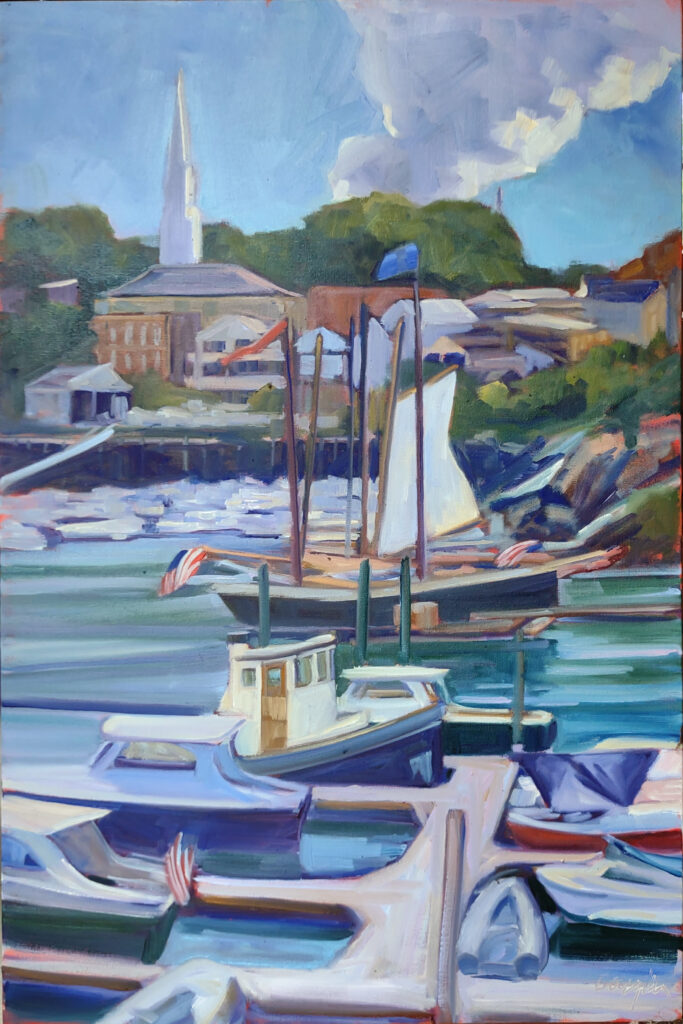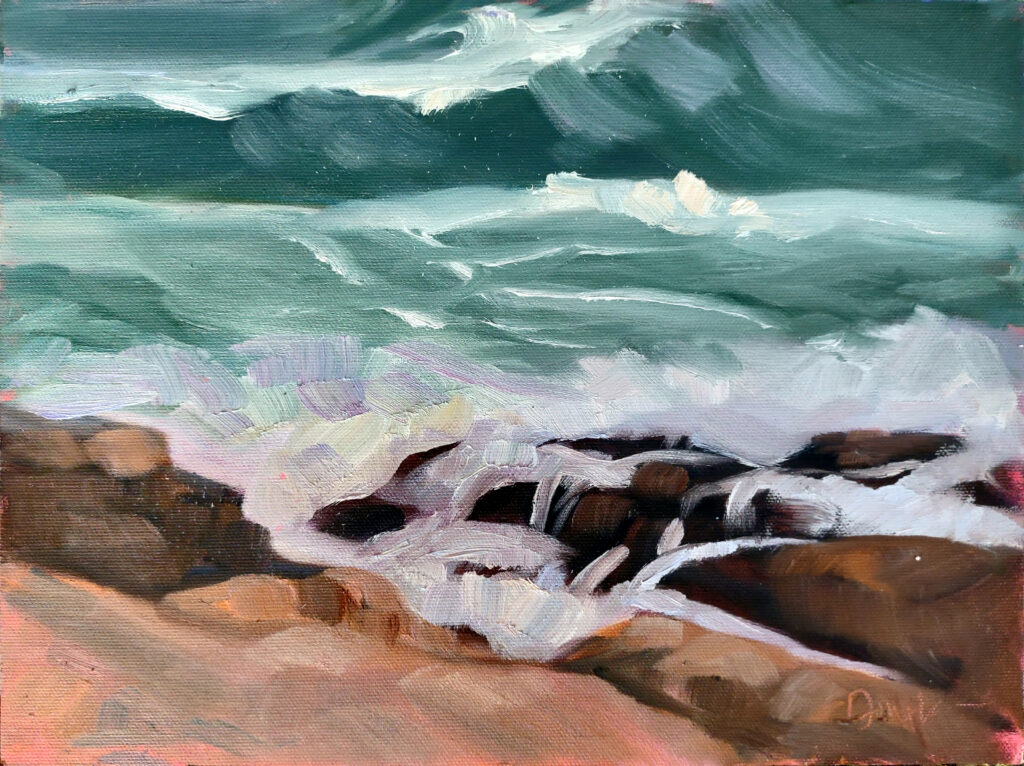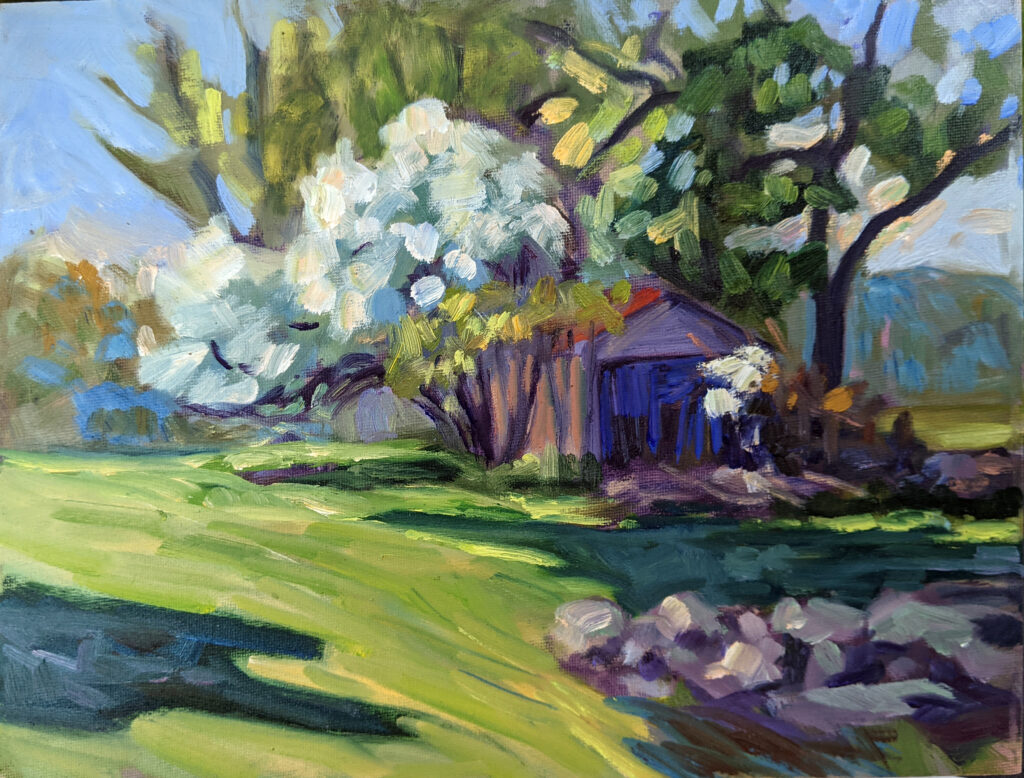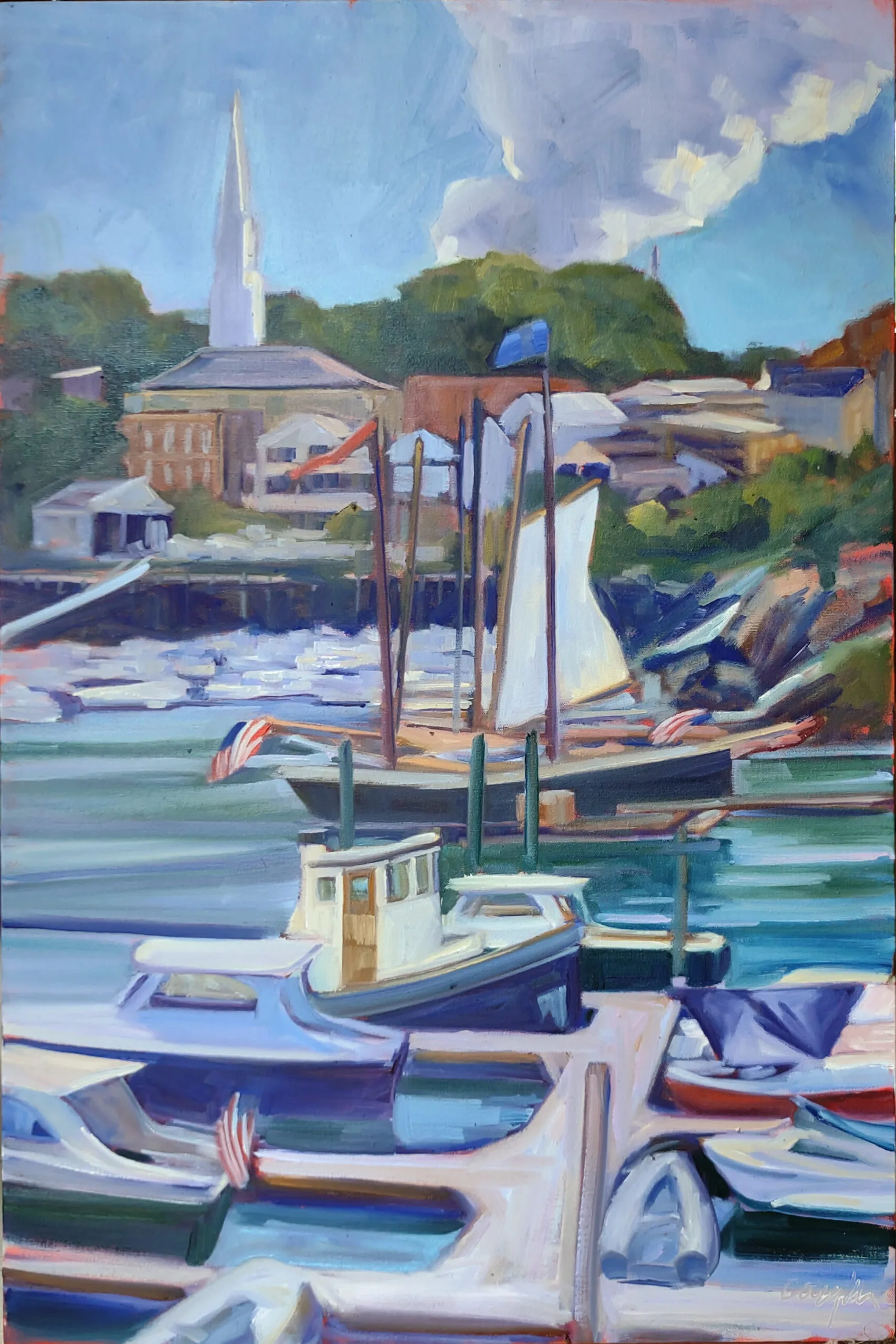
Last week in my Color of Light class, the conversation turned to water-miscible oils. I haven’t used them in years, and only to test them to see if they were a reasonable alternative to conventional oils (yes, although I don’t like their hand-feel). It’s your turn to teach me, and answer the question raised by my students: do miscible oils hold up over time?
Several of my students described problems with cracking, inner layers that didn’t cure, paint surfaces sticking to other things, or paint softening after varnishing with Krylon Kamar Varnish. “But the color is so much better when the painting is varnished,” said the person who’d used the Kamar.

Since I’m a novice on the subject, I’m hoping that those of you with extensive experience with water-miscible oils can share that, good or bad
Kamar is, according to its material safety data sheet (MSDS), full of solvent. At least two of these—heptane and acetone—can dissolve oil paint, so I’m not shocked that Kamar could loosen up the surface of a painting. I’m no chemist and I’m not interested in reading MSDS for every spray varnish, but it makes sense that spray varnish needs plenty of solvent to be sprayable. On the other hand, I’ve used spray damar varnish on conventional oil paintings with no softening of the surface.

Winsor & Newton makes a line of brush-on varnishes for their water-miscible oils, in matte, satin and gloss. I recommend my student try one of those.
Miscible oils are oil paints that are engineered to allow them to be thinned and cleaned up with water. The idea is to avoid using volatile organic compounds like turpentine, which are harmful when inhaled. A disclaimer, however: we haven’t been using turpentine as a solvent in this country in this century; it’s been replaced with odorless mineral spirits, or OMS. In a sense, miscible oils are fixing an obsolete problem.
The typical way of making oil and water mix is to add a surfactant. That’s how detergent works to remove oils from your clothes and dishes. For water-miscible oils, the end of the oil medium molecule is rejiggered to help it bind loosely to water molecules. The key here is loosely; you want the water to evaporate.

The top-tier oil paint manufacturers, such as Gamblin or Michael Harding, do not offer miscible oils. Rather, they have solvent-free systems for working with regular oils. To me that indicates that miscible oils cannot yet be made to the highest standards of oil paints. In fact, the biggest complaint I hear about miscible oils is that their pigment load is lower. I don’t have enough experience to answer this with authority. Do you?
The issue of paintings not setting up or cracking is far more serious. This may be a simple fat-over-lean question. (I think that’s why my Kamar-using student’s paintings were dull and lifeless in the first place.) Fat-over-lean is every bit as true for miscible oils as it is for conventional oils.
In addition, miscible oils can crack is too much water is used, for the same reason that acrylics degrade if excessively diluted. There must be enough medium present to form a bond.
That’s all I know about the subject, so I’d love to hear from you painters with experience with miscible oils: do you like them? What problems have you had with them? Do you have paintings a decade or more old, and if so, how is the finish holding up?
Reserve your spot now for a workshop in 2025:
- Advanced Plein Air Painting, Rockport, ME, July 7-11, 2025.
- Sea and Sky at Acadia National Park, August 3-8, 2025.
- Find Your Authentic Voice in Plein Air, Berkshires, MA, August 11-15, 2025.
- Immersive In-Person Fall Workshop, Rockport, ME, October 6-10, 2025.


Water miscible oils should only be thinned with the medium provided by the manufacturer, never with water, that’s only for cleanup. I painted with them in France in 2011, and though I don’t have any of those paintings in front of me, the buyers have not complained about any cracking or surface problems. I did not varnish them, they had a nice shiny sheen as painted: I was using Winsor and Newton. Marc R. Hanson is the expert on this subject and has compared several available brands. Check it out here: https://marcrhanson.substack.com/p/demo-royal-talens-cobra-water-miscible
I use water miscible oils in addition to regular oils. Here is what I found: water alone is not adequate for thinning. You need to use a watermiscible medium with them . Read the instructions from the manufacturer carefully. A little bit of the medium with water will enable them to flow better. You also might be better off working on canvas mounted to panels, rather than stretched canvas. This reduces the potential for paint layer shifts over time. You still should work fat over lean. Water miscible oils are still oil paints.
I’m no pro at using water miscible oils, however my limited experience with them has been a good one. Newly married, over 20 years ago now, I bought my first collection of oils -some water miscible, others not (I didn’t understand the difference) I just picked what I could afford in the colors I needed. I had no idea what I was doing, but intuitively worked fat over lean, I did 3 very large paintings with them interchangeably and to this day, there are no signs of cracking, peeling, etc. They were given as gifts to my new family and I inspect them periodically to see how they’re holding up.
Helen and I began with water mixables about 17 years ago, on the recommendation of a local painter who was also sensitive to terps. We used them exclusively for our first 10 years of plein air, workshops and studio painting.
We rinsed our brushes in water but used water-mixable thinner and medium instead of mixing any water with the paints.
We applied liquid water mixable varnish (not spray), and preferred the satin reflectivity more than gloss or matte.
Our fave brand was Cobra, which gave richer pigments and a more buttery paint experience. Holbien Duo is pretty good too. Winsor & Newton was okay, but Cobra was noticeably better, to our eyes.
We followed the ‘fat over lean’ principles religiously, after experiencing cracking of a paint layer. Once we understood the principles, we had no further problems, and our 17 year old paintings are still intact.
Eventually, we realized that traditional oils were essentially scent free these days, and now I am using up my old water mixables by integrating them with traditional oils, again with no issues.
I use Gamsol thinner and Galkyd Lite medium, and apply liquid varnish.
Hope this helps…
Thanks! Very helpful!
https://www.outdoorpainter.com/pro-tips-for-using-water-mixable-oils/